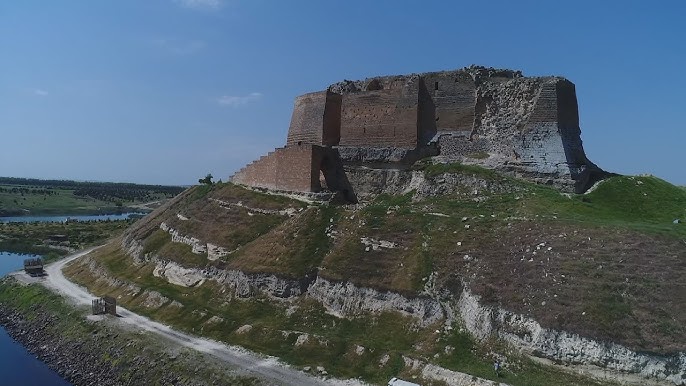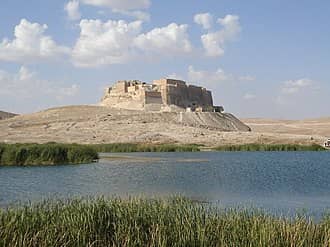Nejm Castle
Nejm Castle overlooks the Euphrates River from a strategic elevated position, approximately 68 meters above the river level. This gave it significant strategic importance throughout history, as it was considered a crucial crossing point for caravans and armies traveling from Iraq and Mesopotamia to Aleppo and the Levant. Historically, it was linked to the famous Manbij Bridge, which was used to cross the Euphrates.
It is believed that the castle was originally built on an ancient Roman site known as Caeciliana. In the 12th century CE, Nur al-Din Zengi renovated the castle, and it was later refortified by King Al-Zahir Ghazi, son of Saladin al-Ayyubi, who added distinctive defensive architectural elements.
Castle Components
Lower Floor: This level housed storerooms, defensive towers, cisterns, and secret passages.
Ground Floor: This floor contained the Emir’s palace and its annexes, including a bathhouse, oven, and water complex.
Upper Floor: The command building and the mosque were located on this floor.
The castle is distinguished by a rock-cut moat surrounding it, ranging from 8 to 9 meters wide and up to 7 meters deep, which significantly enhanced its defensive capabilities.
The castle is currently situated on the edge of a lake formed behind the Tishrin Dam on the Euphrates River. Despite suffering damage during the Syrian conflict, it largely retains its original structure and is considered one of the most prominent archaeological landmarks in the region.









